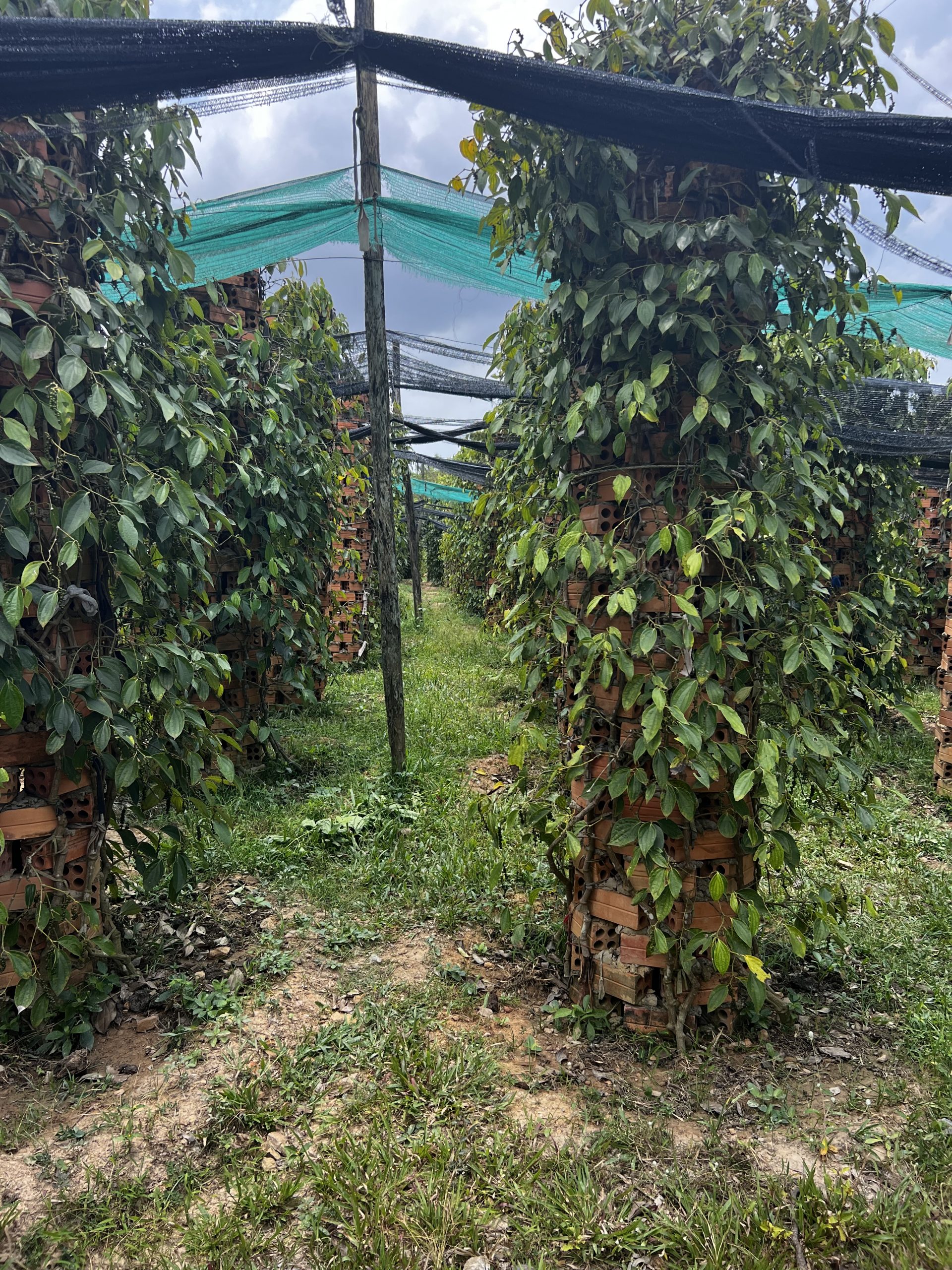Kampot Pepper


Last night was probably the least comfortable of the journey so far, with ineffective air conditioning contributing for the most part. However, we are ready for a day ahead of pepper farm visiting after a quick breakfast that is only available in western form from this hotel. Omelettes and french bread and preserve were the best options with homemade banana bread too. It was all actually very good and washed down with copious amounts of Khmer coffee.
The hotel receptionist obtained a tuk tuk for us to go to the Bo Tree pepper farm and did us a good deal! For $20 the driver would take us, wait as long as we wanted to be there and then bring us back. I think he got a rough deal though, as the road there nearly killed his tuk tuk. However, he was really friendly and knew enough English to give us some information about things on the way. Once out of town, we headed off on some real dirt tracks and out into countryside unlike anything else we had seen. He took us past a reservoir called the ‘Secret Lake’ where locals had dammed a river in order to provide food and water during the reign of the Khmer Rouge. He explained that Pol Pot’s forces had done the same further down river but didn’t realise that the reason it never really worked for them was because the locals had got there first, upstream. It was never found by the forces, hence it became known as the Secret Lake.
About an hour later and we were at Bo Tree pepper plantation, where we are greeted by Selina, a volunteer via Workaway. She is going to do the tour for us and as we later found out, was what has now been termed a ‘flash packer’ – people “backpacking” in later life but interspersing their volunteering with high end experiences and hotels! She was a lawyer from Florida who had burnt out. She had shut her business, sold all her belongings including her house and was planning to travel until her money ran out! During her tour we learnt about the strict organic standards to which the pepper is grown and tasted some of the berries in various states of ripeness. The vines are grown on brick pillars at the moment but as one dies out, after about 15-20 year’s production, they have to plant the new vines against wooden poles as that was the traditional method. The peppercorns are harvested when about 30% of the corns are red; this gives the best conditions for preservation, drying and ripeness. The corns are first sorted for damage; any that are damaged are then kept aside and they form the white pepper that we often use for egg and fish dishes. It also forms most of the ground pepper that we buy in supermarkets and is actually ground as corn and stalk, all together, so not pure pepper corn. Red and green berries are then dried in the sun, the red forming a more floral and sweet pepper corn without much heat, whilst the green turns to our more familiar black pepper once dried. In order to stay green, pepper corns need to be brined and kept in salt water as fresh berries.
After a tour around the plantation, we headed back to the lodge and tried a few examples of the various different peppercorns as well as some new rubs and seasonings that the farm is producing. We then had some lunch there, which of course used the peppercorns in various states to bring out the best of the local food. I had a peppered beef and Corinne had the fish amok. Both excellent.
We clambered back into the tuk tuk for the return journey down the dusty, bumpy road and had reached the hotel by late afternoon. On the way back we discussed what we might do about the hotel we were in. It was one of our longest stays and one of the worst rooms. We decided that we would try and get transferred on to our next destination a day sooner and Corinne set about contacting Trailfinders.
We headed out for a sundowner at Rikitikitavi’s and then went for desert in a local cafe after an evening stroll. We ended up bumping into a couple from Worcester that we had seen at the pepper farm earlier that day, having ice cream at the same place! Not quite sure how we ended up in the same place as they were staying on the other side of the river and quite some way away!
With a bit of ‘to and fro’ via Trailfinders’ ‘urgent’ assistance email, we managed to get agreement to take us on to our next destination a day sooner than planned. However, due to the time difference, we went to bed not quite knowing what was happening, just that in principal we were moving a day early. We were still potentially going to have some time in Kampot tomorrow and we wanted to use that time to go to Kep.




0 Comments